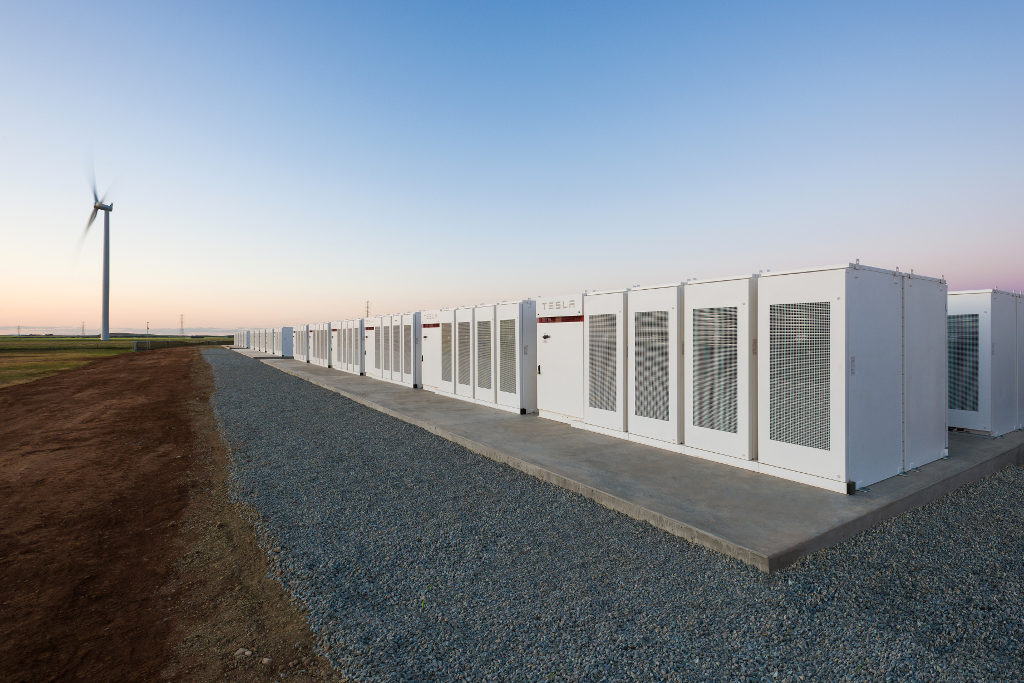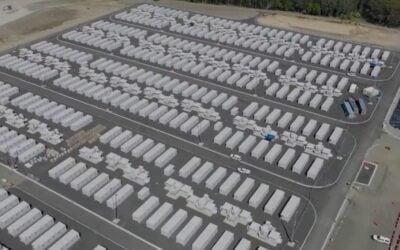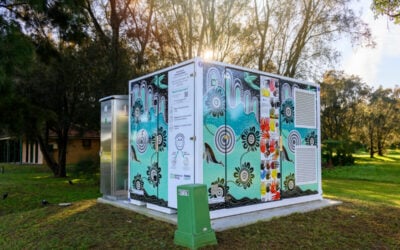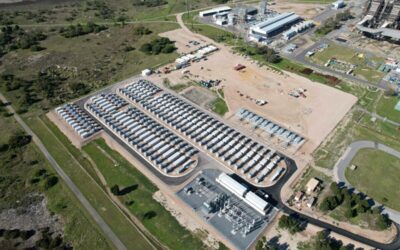
While the Federal government of Australia resists public and political pressure to commit to net zero targets, the states of Victoria and Queensland have made progress in advancing plans for a large-scale standalone battery project and a wind-plus-storage plant respectively.
The former, as it stands, will be the largest battery storage system built so far in the globe’s Southern Hemisphere. Last week, Victoria’s minister for Energy, Environment and Climate Change Lily D’Ambrosio announced that she had instructed the Australian Energy Market Operator (AEMO) to sign contracts with developer Neoen and technology provider Tesla for the construction of the ‘Victoria Big Battery’.
A 300MW lithium-ion battery energy storage system (BESS) will be built, operated and maintained by France-headquartered Neoen, using Tesla’s battery systems technology, while Neoen will also pay for the project’s construction as well as O&M costs, according to a release from the Victorian government.
The Big Battery will be installed near the city of Geelong and is expected to enable increased interconnection between Victoria and the state of New South Wales by as much as 250MW, reducing the probability of unscheduled power outages by alleviating unscheduled load shedding. In order to make the project eligible for doing so, the AEMO awarded a 10-year contract for Systems Integrity Protection Scheme (SIPS).
Try Premium for just $1
- Full premium access for the first month at only $1
- Converts to an annual rate after 30 days unless cancelled
- Cancel anytime during the trial period
Premium Benefits
- Expert industry analysis and interviews
- Digital access to PV Tech Power journal
- Exclusive event discounts
Or get the full Premium subscription right away
Or continue reading this article for free
It will also be able to charge with electricity generated at times when renewables generation is abundant and then discharge into the grid when demand for electricity rises, which will help reduce wholesale prices and consumer bills. Summer electricity prices are rising in the state due to growing peak demand, while Victoria’s fleet of coal power stations are becoming increasingly unreliable as they age.
The government said that according to an independent study, every dollar invested in the project will deliver more than twice that back in benefits. A portion of the battery system’s capacity, 50MW will be used to participate in energy markets during summer, while the entire 300MW will be available to do so the rest of the year.
“The big battery will help protect our network in summer, create jobs and drive down energy prices – as well as supporting our recovery from the coronavirus pandemic,” minister Lily D’Ambrosio said.
“Victoria is embracing new technologies that will unlock more renewable energy projects than ever before –delivering clean, cheap, reliable power to all Victorians.”
The state of Victoria is targeting 50% renewables on its grid by 2030. The Victoria big Battery is scheduled to be commissioned before the summer of 2021-2022 with the construction phase expected to create around 85 jobs.
500MW Queensland wind farm developers plan 200MWh battery addition
Planning approval has been granted by Queensland’s state government for Wambo Wind Farm, a 500MW renewable power generation project being developed jointly by UK-headquartered renewables firm Cubico Sustainable Investments and local player Renewable Energy Partners.
Queensland is also targeting 50% renewables by 2030 and the project has been in development since 2018. It will be built in south-west Queensland and comprise up to 110 wind turbines. The project partners are also planning to add a 50MW / 200MWh battery energy storage system (BESS).
A Cubico representative told Energy-Storage.news that no technology has been selected for the battery portion yet and that sizing and technology “will be finalised at a later date,” while “building the battery remains subject to market conditions”.
The planning approval, granted just before the end of October, caps off a busy few weeks for energy storage and renewables-plus-storage development at state government level in Australia. Recent examples include South Australia signing a power supply contract with commercial and industrial (C&I) renewables company Zen Energy which supports the latter’s aim of building out a 100MW battery project and a 7,200MWh pumped hydro project being awarded Critical State Significant Infrastructure status by the government of New South Wales.
Meanwhile, although the Federal government of Prime Minister Scott Morrison remains somewhat vague on setting big picture ‘net zero’ targets of the type already committed to by the likes of the UK, China, Japan and South Korea, his government did recently award major project status to a potential 26GW+ hydrogen exporting renewable energy hub and has supported the funding of a 75MWh battery storage system trial in Sydney.





